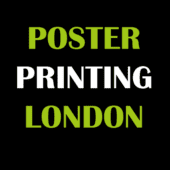Crafting an Effective Scientific Poster: A Guide for Researchers
In the realm of academia and scientific conferences, the scientific poster serves as a powerful medium for researchers to showcase their work, share findings, and engage with fellow scholars. A well-designed poster not only conveys complex information effectively but also captivates the audience’s attention and fosters meaningful discussions. Here’s a comprehensive guide on how to make a scientific poster that stands out and leaves a lasting impression.
1. Define Your Message
Before diving into the design process, it’s essential to clarify the key message of your poster. What are the main findings or insights you want to communicate? Define your objectives and structure your content accordingly to ensure clarity and coherence.
2. Organize Your Content
Structure your poster in a logical and easy-to-follow manner. Typically, scientific posters include sections such as Introduction, Methods, Results, Discussion, and Conclusion. Use concise headings and subheadings to guide the reader through your research process and findings.
3. Choose an Eye-Catching Layout
Select a visually appealing layout that enhances readability and engagement. Divide your poster into distinct sections, with each segment clearly delineated using appropriate spacing and visual elements. Utilize a grid-based layout to maintain alignment and balance throughout the design.
4. Embrace Visuals and Graphics
Incorporate visuals and graphics to convey information effectively and enhance the aesthetic appeal of your poster. Utilize charts, graphs, tables, and images to present data, illustrate key concepts, and highlight significant findings. Ensure that visuals are clear, legible, and complement the text.
5. Optimize Textual Content
Keep textual content concise, focusing on essential information and key takeaways. Use bullet points, brief sentences, and simple language to convey complex ideas succinctly. Choose a readable font size and style, ensuring that text is easily legible from a distance.
6. Incorporate Branding and Logos
Include branding elements such as your institution’s logo, research group name, and relevant affiliations to establish credibility and context. Place these elements strategically within the poster layout, ensuring they complement rather than distract from the main content.
7. Pay Attention to Color and Typography
Select a cohesive color scheme that enhances visual hierarchy and reinforces your research theme. Use color strategically to differentiate sections, emphasize important points, and create visual interest. Additionally, choose typography that is clear, professional, and easy to read.
8. Practice Simplicity and Clarity
Avoid clutter and unnecessary complexity in your poster design. Focus on conveying your message with clarity and simplicity, prioritizing substance over style. Use white space strategically to create breathing room and draw attention to key elements.
Conclusion: A Tool for Effective Communication
In the realm of academic research, the scientific poster serves as a valuable tool for effective communication and knowledge dissemination. By following the guidelines outlined above and approaching the design process with intentionality and creativity, researchers can create posters that not only showcase their work but also inspire curiosity, foster dialogue, and contribute to the advancement of science. So, whether presenting at a conference, symposium, or poster session, remember that a well-crafted scientific poster has the power to inform, engage, and leave a lasting impression on its audience.
